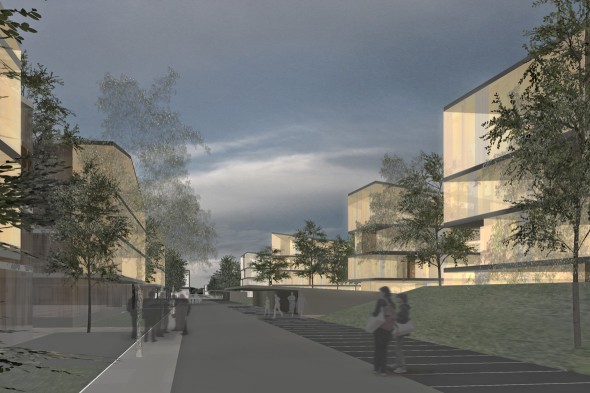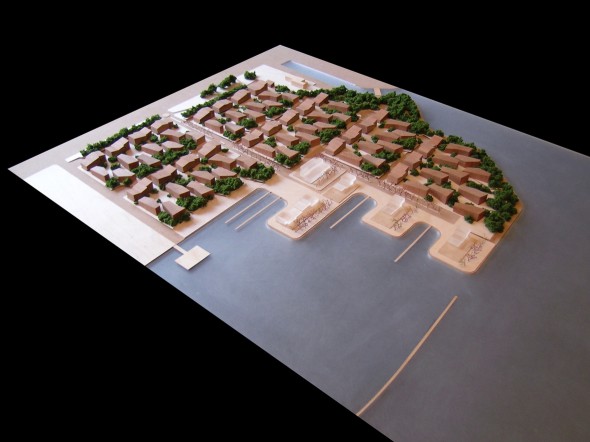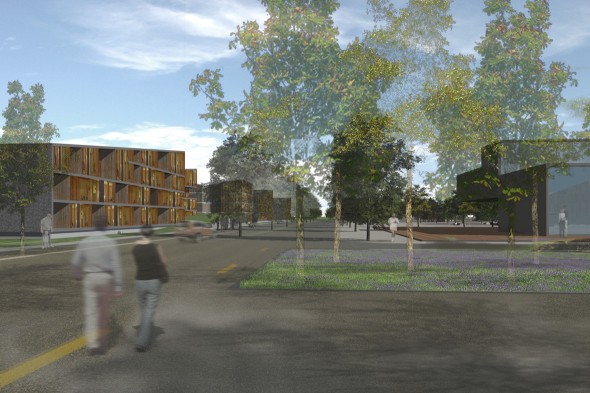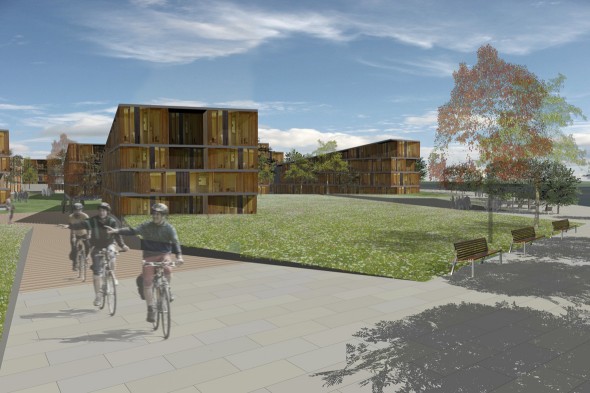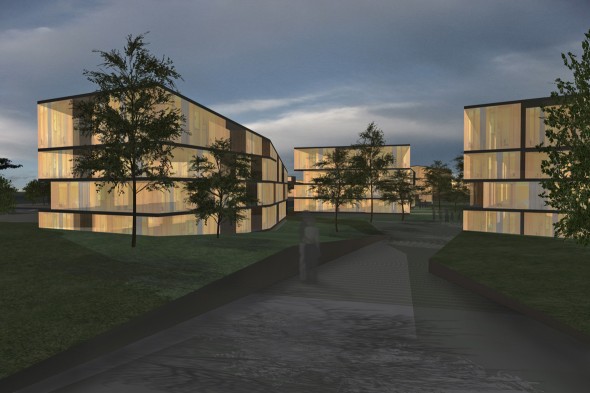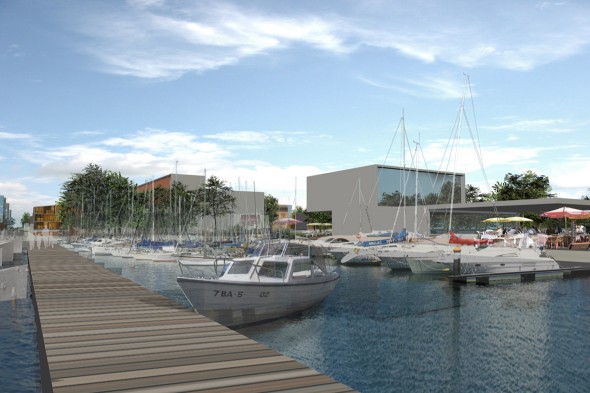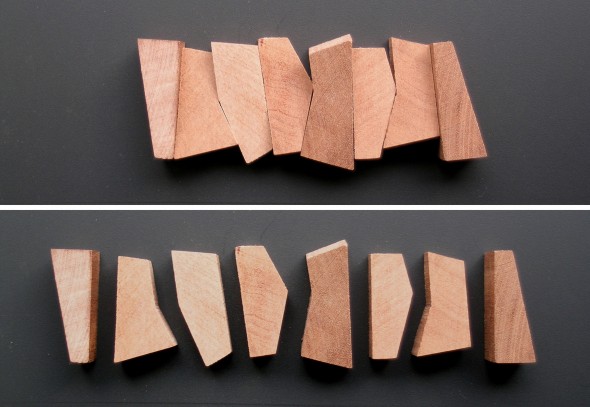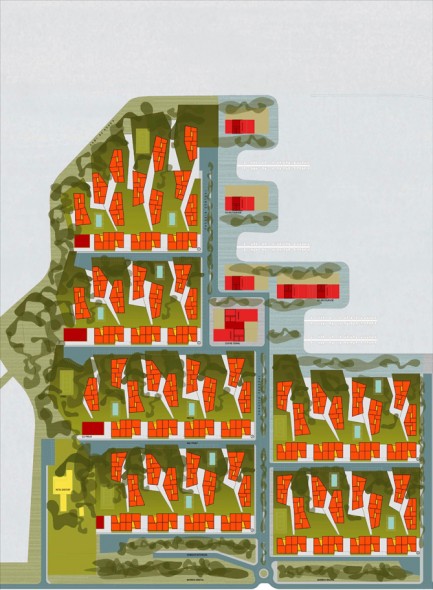Master plan and development of the Gardony Peninsula design competition in Velence (Hungary)
| Dates | 2008 |
| Site | Velence Lake (Hungary) |
| Client | Upside Investiments |
| Built area | 197.346 m2 |
| Architects | Joan Pascual, Ramon Ausió, Cristóbal Fernández, Josep Ferrando |
| Imaging | In-house |
The whole complex is structured along a main Boulevard starting at the roundabout that gives access to the peninsula. It is shifted to the Eastern part of the development, and it is designed to organise the access to the residential areas, the marina and the lakefront promenade of both vehicles and pedestrians.
The shape of the buildings responds both to the requirements established in the brief as well as the desire to integrate them in the natural landscape surrounding the development. They all have a pitched roof, and there are basically two types of buildings: those which are aligned with the main streets of the development and those located in the interior. The first ones are placed independently, side by side in groups of 3 and 4, under an ideal single roof shaped like a wave that links them all.
The shape of the buildings in the interior is modelled in order to maximize the quality of the gaps between them and emphasise the relationship between interior and exterior areas. The result is a series of buildings that run away from the stereotypical prismatic shape that housing blocks normally have. In spite of this irregular façade, the units offer a rather rational and functional layout.
